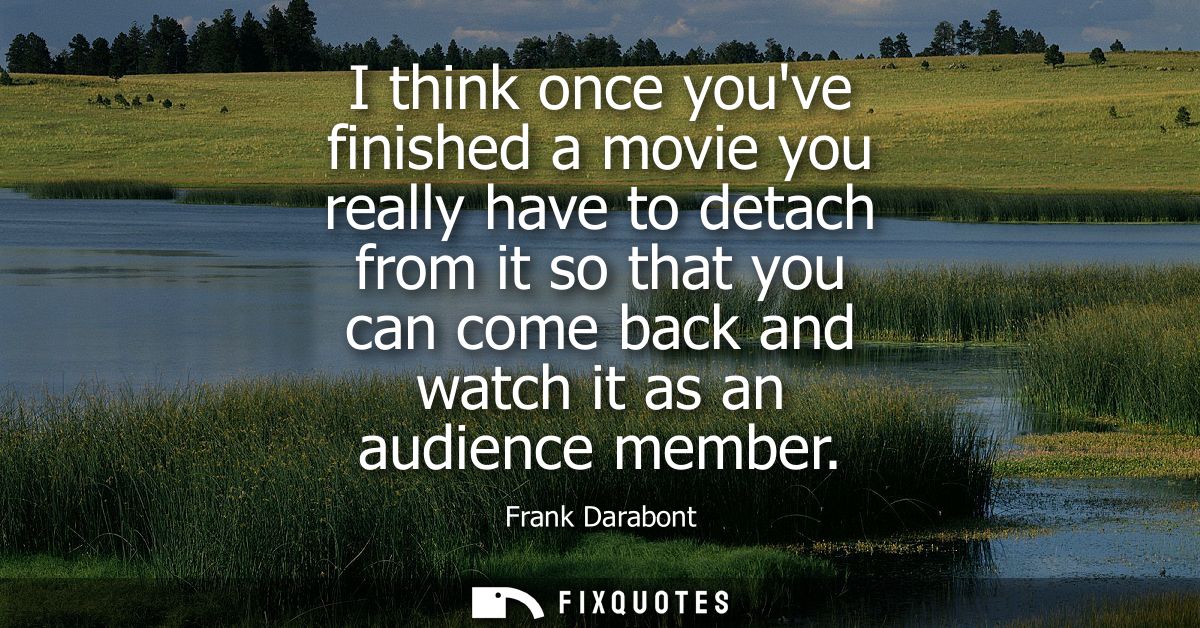"I think once you've finished a movie you really have to detach from it so that you can come back and watch it as an audience member"
About this Quote
Frank Darabont’s reflection on the process of finishing a movie highlights the importance of artistic detachment and the need for creative distance in filmmaking. When a director or any member of a creative team invests themselves in a project, they pour their emotions, thoughts, and perspectives into every detail, from casting and writing to the final cut. This deep involvement, while essential for a film’s integrity and cohesion, can cloud one’s ability to see the finished work with fresh eyes. The intense relationship between creator and creation can make it nearly impossible to objectify and critically assess the outcome without residual attachment.
By advocating detachment, Darabont suggests that stepping away from a completed film enables the filmmaker to shed their bias and emotional entanglement. This separation is not about abandoning the work but allowing time and psychological space for the initial flurry of feelings, pride, regret, anxiety, or hope, to settle. Only through this process can the creator approach the film again not as its parent, but as a typical viewer, experiencing the narrative, performances, and thematic resonance without internal interference.
This transition from creator to audience member is essential for growth and self-reflection. Returning to the movie later, the filmmaker can appreciate aspects previously overlooked, notice flaws or triumphs with greater clarity, and understand genuine audience reactions. It enables a more honest appraisal of the film’s impact, pacing, emotional beats, and storytelling effectiveness. Furthermore, it protects the creative spirit from excessive self-critique or lingering dissatisfaction, which could hinder future projects or personal fulfillment.
Darabont’s insight applies universally across creative mediums, not just filmmaking. Whether one is a writer, painter, or musician, achieving distance from one’s completed work is crucial for maintaining perspective and continuing to develop as an artist. Letting go, even temporarily, allows for renewal of passion and the possibility of engaging with the art as others will experience it.
About the Author

